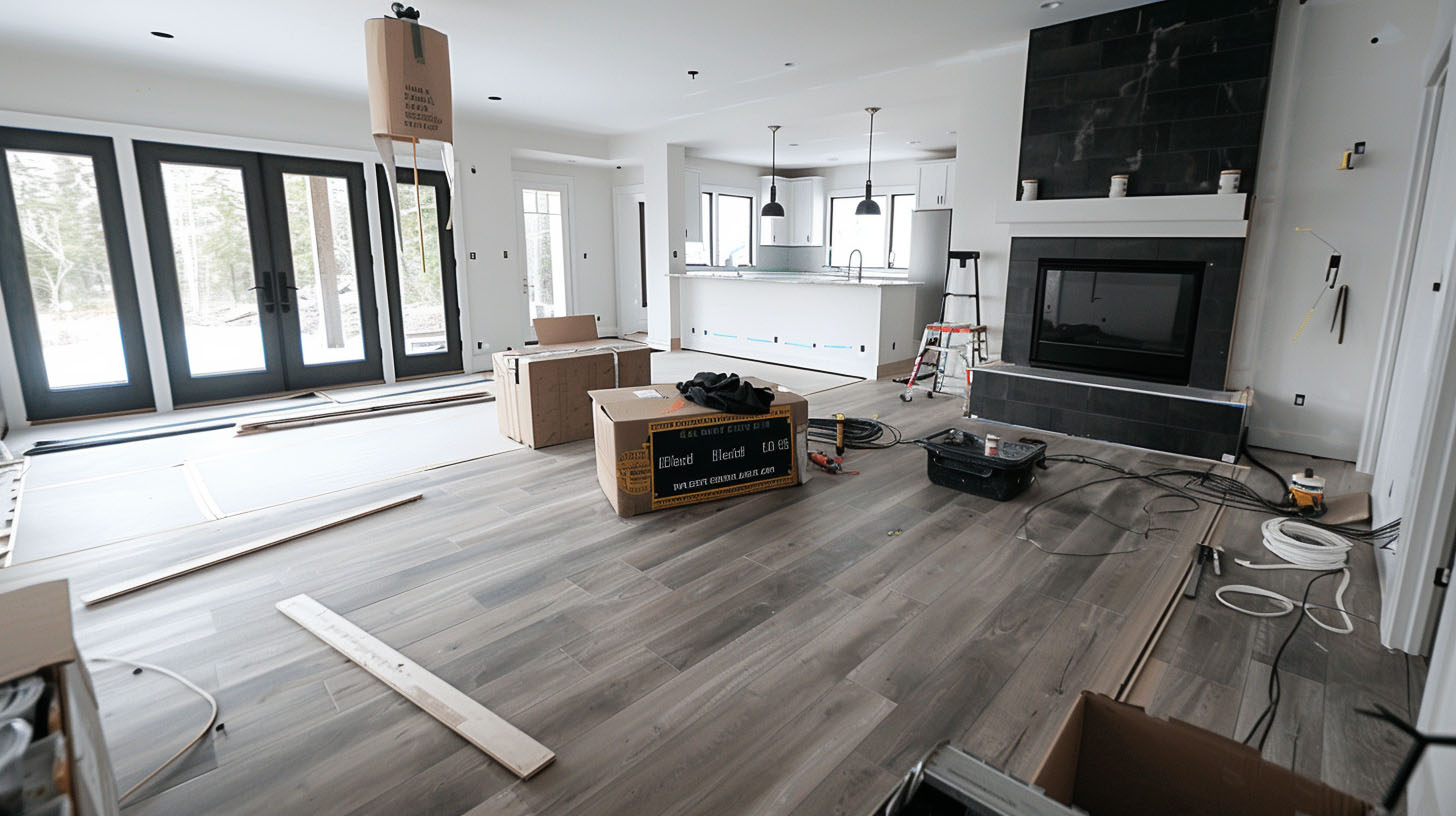
If you’re considering vinyl flooring for your home or office, you might wonder if it can be laid directly on a concrete floor. Concrete is a common subfloor, and many homeowners want to know the best practices for installation. Let’s dive into the details.
Yes, you can lay vinyl flooring on a concrete floor, but proper preparation and installation are key to achieving a long-lasting, flawless finish.
In this guide, we’ll cover how to prepare concrete floors1, the need for underlayments, and the requirements for direct installation.
How do you prepare a concrete floor for vinyl flooring?
Preparation is the most critical step in laying vinyl flooring on a concrete floor. A poorly prepared subfloor can lead to uneven surfaces, bubbling, or premature wear.
To prepare a concrete floor for vinyl flooring, clean it thoroughly, level the surface, and address moisture issues. [Learn how to prepare a concrete floor].
Dive deeper into preparing a concrete floor
1. Cleaning
- Sweep and vacuum the concrete floor to remove dirt, dust, and debris.
- Mop the floor with a mild detergent to eliminate any grease or stains.
2. Leveling
- Inspect the floor for cracks or uneven areas.
- Use a self-leveling compound to fill in low spots and ensure the surface is completely flat.
3. Moisture Testing
- Concrete is porous and can retain moisture. Use a moisture meter to test for dampness.
- If moisture levels are high, apply a moisture barrier2 or sealant.
Table: Concrete Floor Preparation Checklist
| Step | Tools Needed | Purpose |
|---|---|---|
| Cleaning | Broom, vacuum, mop | Removes debris and grease |
| Leveling | Self-leveling compound | Ensures a smooth surface |
| Moisture Testing | Moisture meter, sealant | Prevents damage from trapped moisture |
A well-prepared concrete floor is essential for the longevity of your vinyl flooring.
What do you put down on a concrete floor before vinyl flooring?
Before installing vinyl flooring, you may need to add a layer between the concrete and the vinyl to enhance performance and durability.
A moisture barrier or underlayment is often placed on a concrete floor before vinyl flooring to protect against dampness and improve insulation. [Find out what goes under vinyl flooring].
Dive deeper into layers under vinyl flooring
1. Moisture Barrier
- A plastic or polyethylene sheet prevents moisture from seeping into the vinyl flooring. This is critical for basements or areas prone to humidity.
2. Underlayment
- Some vinyl flooring types, such as click-lock planks, may require a foam or cork underlayment for added cushioning and sound insulation.
3. Adhesive
- For glue-down vinyl, a high-quality adhesive is applied directly to the concrete surface.
Table: Materials Used Under Vinyl Flooring
| Material | Purpose | Suitable Situations |
|---|---|---|
| Moisture Barrier | Prevents dampness | Humid or below-grade areas |
| Foam Underlayment | Provides cushioning and warmth | Floating vinyl planks |
| Adhesive | Secures vinyl to subfloor | Glue-down vinyl flooring |
Understanding the role of these layers helps you choose the right installation method for your space.
Can you put vinyl flooring directly on concrete?
It’s possible to install vinyl flooring directly on a concrete floor, but certain conditions must be met to ensure success.
Yes, vinyl flooring can be installed directly on concrete if the floor is clean, dry, and level. However, a moisture barrier is recommended3 to prevent long-term damage.
Dive deeper into direct installation on concrete
1. Cleanliness
- Any dirt or debris left on the surface can prevent the vinyl from adhering properly.
2. Dryness
- Moisture trapped beneath the vinyl can cause it to bubble or warp over time. Always test for moisture before installation.
3. Flatness
- An uneven surface will lead to noticeable imperfections. Smooth out any bumps or cracks before proceeding.
Advantages of Direct Installation
- Saves time and cost by eliminating the need for additional layers.
- Works well for adhesive-backed or glue-down vinyl options.
Disadvantages of Direct Installation
- Less insulation and soundproofing.
- Increased risk of damage from moisture or uneven surfaces.
Direct installation is a viable option but comes with trade-offs that you should carefully consider.
Do you need underlay for vinyl flooring on concrete?
The need for underlay depends on the type of vinyl flooring and the condition of the concrete floor.
Underlay is not always necessary for vinyl flooring on concrete, but it can improve comfort, insulation, and soundproofing4.
Dive deeper into when underlay is needed
1. Floating Vinyl Planks
- These often require an underlay for added stability and noise reduction.
2. Glue-Down Vinyl
- Typically does not require an underlay, as the adhesive provides a direct bond to the concrete.
3. Cushioning and Insulation
- In colder climates, an underlay can make the floor feel warmer and more comfortable underfoot.
Table: When to Use Underlay for Vinyl Flooring
| Flooring Type | Underlay Needed? | Benefits of Using Underlay |
|---|---|---|
| Floating Vinyl Planks | Yes | Comfort and soundproofing |
| Glue-Down Vinyl | No | Direct bonding to concrete |
| Peel-and-Stick Vinyl | Optional | Adds cushioning and insulation |
Choosing the right underlay or deciding to skip it entirely depends on your flooring type and desired comfort level.
Conclusion
Vinyl flooring can be successfully laid on a concrete floor with proper preparation and attention to detail. Whether you choose to install it directly or with underlay, the key is to ensure the concrete is clean, dry, and level. With the right approach, you’ll enjoy a durable, stylish floor that enhances your space for years to come.
Footnotes:
-
Detailed steps on preparing a concrete floor for vinyl flooring, including leveling and moisture testing. ↩
-
Learn why a moisture barrier is critical and how to choose the right one for your vinyl flooring project. ↩
-
Understand the requirements for installing vinyl directly on concrete and when additional layers are needed. ↩
-
Explore the benefits of using underlay for vinyl flooring, such as added comfort and insulation. ↩


